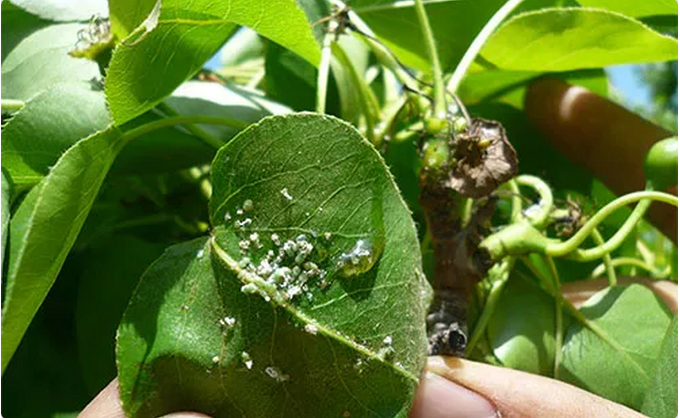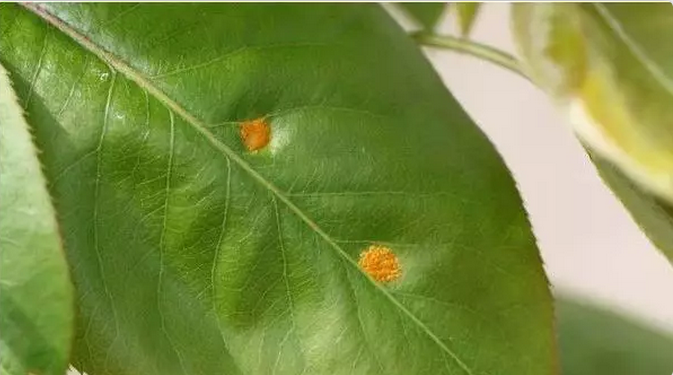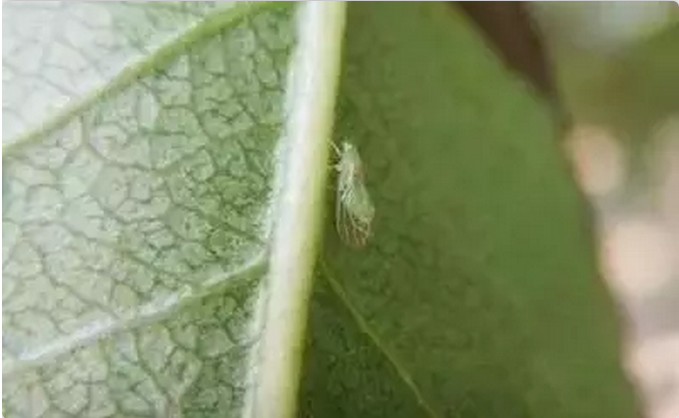Like most pests, this Hemiptera belongs to eating young leaves of fruit trees, which is one of the most troublesome pests in fruit cultivation.

The pear mite generally becomes winter at the deciduous, weed, soil and stone interstices, bark junction, blooms in early spring from February to March, and lays eggs before the sprouting of the pear tree in mid March start. The peak of egg laying reached in early April, and the larval incidence increased from mid to late April. From May to July, it is the end of the danger! Therefore, for fruit farmers who are at a time to prevent and manage pear hibiscus, we have to do 12 points to solve pear rafts! In the following, Xiaobian will guide everyone (I'm as professional as possible) from a professional standpoint to introduce a more reliable PEAR WOOD prevention and management program.
Harm of hibiscus in pears is directly impaired by the sap of young nymphs that suck in pear shoots, leaves and shoots, adults and nymphs focus on new shoots and petioles, and summer and autumn feed on the back of the leaf . At the same time, mucus is secreted and can stick to the two adjacent leaves. Insects hide inside and cause gonorrhea etc. When the leaves dry and fall, new sprouts are damaged, dull and contract .

Pear fruit is caused by the damage caused by honeydew excreted by honeydew, and honeydew caused by honey drainage is seriously contaminated, reducing the value of pear fruit and reducing its quality. Everything that is "patroled" by Pearwood will be black. Some are one point at a time and some are black. Economic benefits will also decrease significantly.

Reproductive ability is very strong, adults are mainly used for egg laying, adults are divided into winter and summer, the color can distinguish adults from brown or dark brown summer adults to green to golden yellow . Most of the spawning is in the hidden part of the pear tree, which is laid on branches and leaves before the pear tree sprouts in March, and the egg is the inner leaf of the young tissue between germination and expansion It is produced in the main vein of the sawtooth and leaves. For pests, do not underestimate the reproductive capacity of pests Pear mites are 3 to 5 generations in a year, 6 to 7 generations in the central and southern regions of the southeast, 8 to 10 generations in the south of the Yangtze River It occurs in It is closely related to rainfall each year, and also has low rainfall and low rainfall, which generally occurs in dry years.
The first generation: A part of egg laying, roots of flower buds, incubation period in early April, mid- and late April in larvae.
Second generation: It occurred from mid to late May, which is the spawning period of the second generation before and after wheat harvest, and the spawning part was in the foliage of some leaves above the shoot.
Third generation: From mid-June to mid-August, from mid-August to mid-August, the spawning site is between the serrations of the leaves, and the generations overlapping from the third generation are severe.
Fourth generation: It occurred from the beginning of August to the end of August.
Fifth generation: occurred in early September.
From late September to October, adults shifted to winter, and temperatures in the early spring exceeded 0 ° C.
There are two important periods in the prevention and management of pear rafts in one year.
First: before and after annual fear. At the moment, prevention and management can achieve twice the results with half effort, save time, solve problems, and achieve good results.
Second: May-June is the second before and after wheat harvest, and the second appearance period of pear raft, which is the second most important period for prevention and control of pear hybiscus throughout the year, There is a decrease in the insect population of pear hibiscus.
For the third generation of regeneration, in the third generation, the generation of rims has become larger.
Therefore, it is necessary to take control measures for the second generation and the second generation. For prevention, ovulation should be best, and eggs and larvae are most effective during incubation. With fewer eggs and fewer nymphs, adults can not naturally cause major disasters.
Insecticide products currently popular in the market and widely recognized by growers due to the danger of pear hibiscus include thiamethoxam,
1.8% avermectin, imidacloprid and chlorpyrifos.



